
Learn all about companion planting with herbs! Find out which herbs and vegetables grow well together, which herbs to plant together, and which herbs go with which foods. Plus, see how to make a culinary herb wreath! Here are our favorite culinary herbs for the garden—and the kitchen.
Check out our vegetable companion planting guide as well!
Basil (Ocimum basilicum)
Flavor: Flavors of cloves, mint, and cinnamon.
In the garden: Thought to repel whiteflies, mosquitoes, spider mites, and aphids. Plant basil with tomatoes, peppers, purslane, and lettuce.
Grows well with: Oregano and parsley.
In the kitchen: Basil combines well with tomatoes, peppers, eggplants, and zucchini. Works well in salads (tuna, greens, potato, egg). Also wonderful in pestos, salad dressings, and herb butter. Try basil on bread with fresh tomatoes and mayo.
Bay (Laurus nobilis)
Flavor: Has a fresh, spicy, balsamic aroma.
In the garden: Plant with beans.
Grows well with: Rosemary, sage, thyme, and parsley.
In the kitchen: Adds deep, rich flavor when added to the beginning of soups and stews. Good with braised meats, slow-cooked dishes, dried beans, marinades, dried fruit, and eggs.

Chives (Allium schoenoprasum)
Flavor: Oniony, but more subtle than onion itself.
In the garden: Plant with carrots, tomatoes, and sunflowers. Believed to repel aphids, beetles, cabbageworms, slugs, and carrot flies.
Grows well with: Dill, marjoram, parsley, and tarragon.
In the kitchen: Chives enliven vegetable dishes, chicken, potatoes, eggs, and cheese dishes. Use in vinegars, butters, and oils. Scatter over salads and soups.
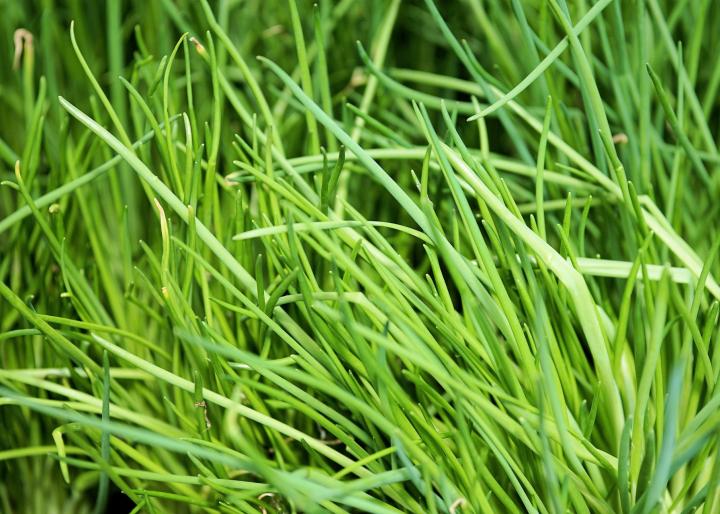
Dill (Anethum graveolens)
Flavor: Flavor, when fresh, is anise-like and lemony. Seeds smell similar to caraway, with a sharp taste.
In the garden: Plant with tomatoes, peppers, and eggplants, as well as with cabbages and other brassicas. Keep away from cilantro, which it will cross-pollinate with. It works well as a trap crop for tomato hornworms and aphids.
Grows well with: Chives, lemon balm, lemon thyme, and lovage.
In the kitchen: Use dill seed for pickling and also to add aroma and taste to strong vegetable dishes like cauliflower, onions, cabbage, and turnips. Seeds can be added to casseroles, lamb, fish, and sauces. Use fresh with green beans, potato dishes, cheese, soups, casseroles, meat dishes, pasta, and eggs.
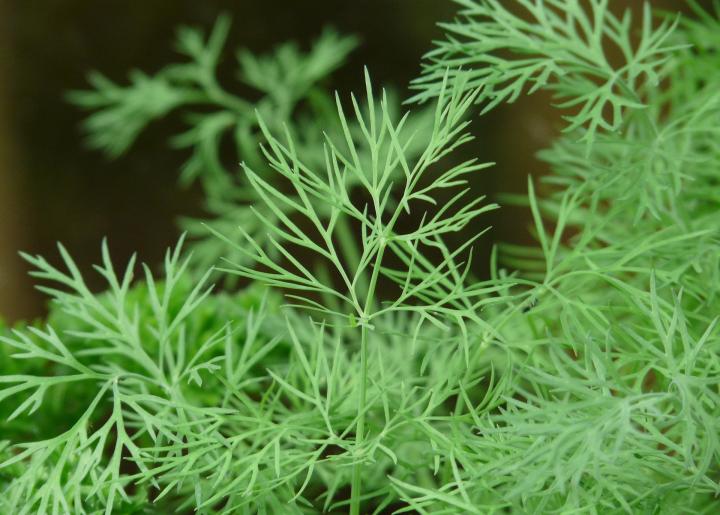
Marjoram (Origanum majorana)
Flavor: Warm and slightly spicy
In the garden: Good companion to most vegetables and aromatic herbs, like oregano, lavender, and rosemary. Also a good companion to kiwifruit vines.
Grows well with: Basil, chives, oregano, parsley, rosemary, sage, thyme, and lavender.
In the kitchen: Excellent in almost any fish, poultry, eggs, cheese (like mozzarella), or vegetable dish that isn’t sweet. Adds warmth and spice to beans, beets, eggplants, garlic, mushrooms, spinach, summer squash, and tomatoes. Add near the end of cooking.
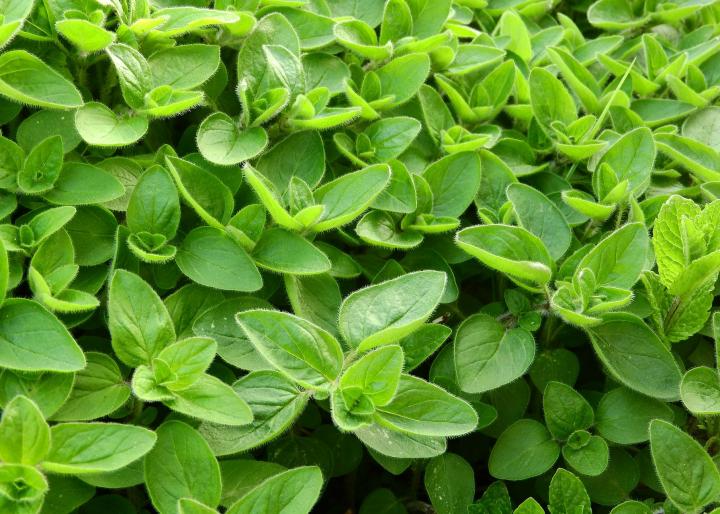
Mints (Mentha spp.)
Flavor: Menthol and fruit.
In the garden: Plant near tomatoes, brassicas, and peas. Deters white cabbage moths, aphids, and flea beetles.
Grows well with: Oregano. NOT parsley. (Note: It’s best to plant mint near a companion plant or in its own pot or bed, as it’s a very vigorous spreader!)
In the kitchen: It is common in Middle Eastern dishes. Use with roast lamb, fish, or poultry and in salads, jellies, or teas. Also adds zing to peas, cucumbers, potatoes, eggplants, garlic, lettuces, carrots, beets, summer squashes, chili, legumes, tomatoes, fruits, ginger, and chocolate.
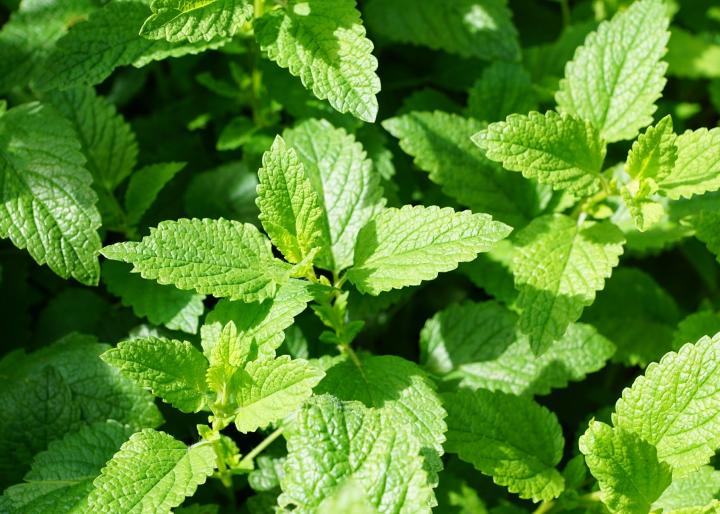
Oregano (Origanum vulgare)
Flavor: Strong, zesty, peppery, and spicy.
In the garden: Good companion to all vegetables, especially those most susceptible to sap-sucking insects like aphids. Plant near peppers, eggplant, squash, beans, cabbage, broccoli, brussels sprouts, cauliflower, kohlrabi, turnips, and strawberries.
Grows well with: Basil, chives, parsley, rosemary, sage, savory, and thyme.
In the kitchen: Good in any tomato dish. Use in soups, casseroles, sauces, stews, stuffing, eggs, chili, and pizza. Try oregano with summer squash and potatoes, eggplant, peppers, mixed greens, and onions. Add to a marinade for lamb, game, or beef.
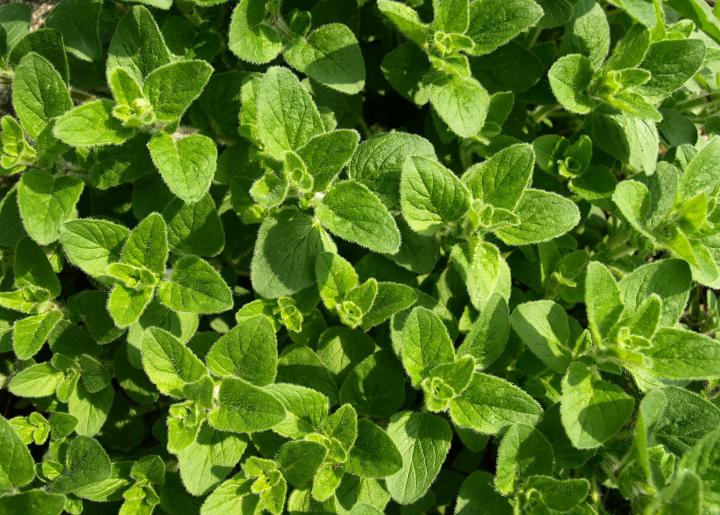
Parsley (Petroselinum crispum)
Flavor: Tastes tangy and lightly peppery.
In the garden: Plant near asparagus, carrots, chives, and tomatoes. It attracts beneficial insects like parasitic wasps, ladybugs, and damselflies.
Grows well with: Basil, chives, dill, lavender, lemon balm, lovage, marjoram, oregano, rosemary, sage, savory, and thyme.
In the kitchen: Use fresh parsley in soups, stews, gravies, sauces, and salads. It lessens the need for salt in soups. Superb with meat and potatoes. You can fry parsley as a side dish with meat or fish. It is, of course, the perfect garnish.
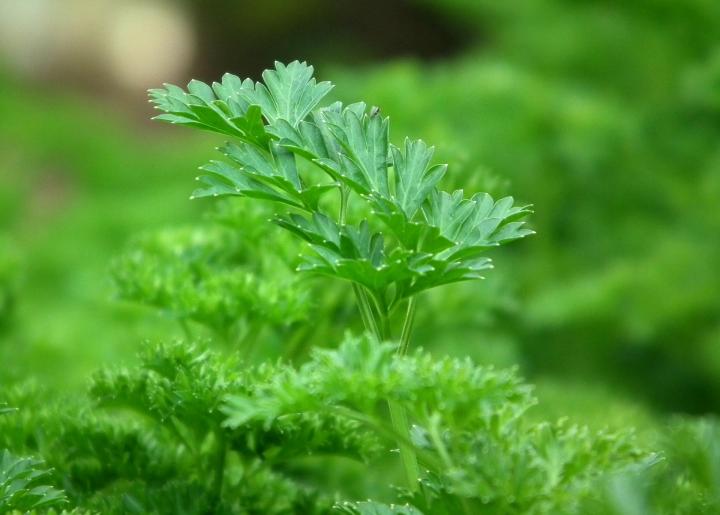
Rosemary (Rosmarinus officinalis)
Flavor: Piney and lemony.
In the garden: Plant near brassicas (cabbage, broccoli, cauliflower, etc.), collards, beans, garlic, and carrots. Deters cabbage moths, bean beetles, Japanese beetles, and carrot flies.
Grows well with: Bay, basil, chives, lavender, lemon verbena, marjoram, oregano, parsley, sage, savory, tarragon, and thyme.
In the kitchen: Use with poultry, lamb, venison, tomato sauces, stews, soups, and vegetables. Try it finely chopped in breads and custards for a savory tinge. Tastes excellent on steamed red potatoes or peas.
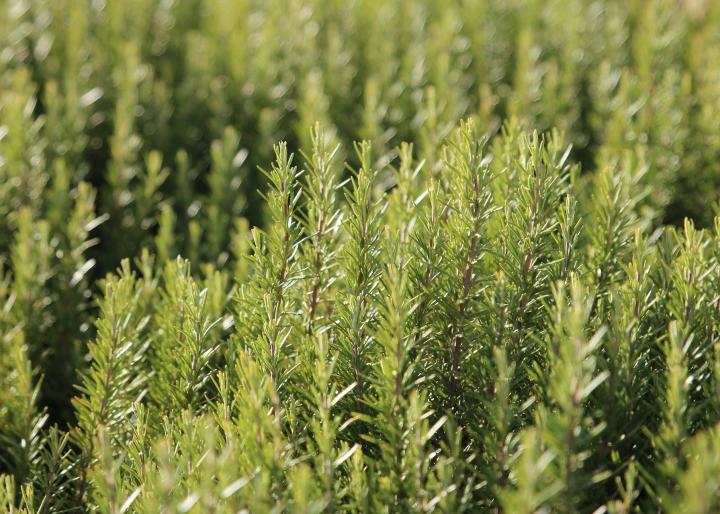
Sage (Salvia officinalis)
Flavor: Earthy and bold. Use sparingly.
In the garden: Plant near brassicas, carrots, lettuce, and beans. Deters cabbage moth and carrot fly.
Grows well with: Lavender, lemon balm, lemon thyme, lemon verbena, lovage, oregano, parsley, rosemary, savory thyme, and tarragon.
In the kitchen: Sausage, poultry, stuffing, lamb, and breads. Use in cheese dishes, stuffings, soups, pickles, with beans and peas, and in salads. Excellent for salt-free cooking.
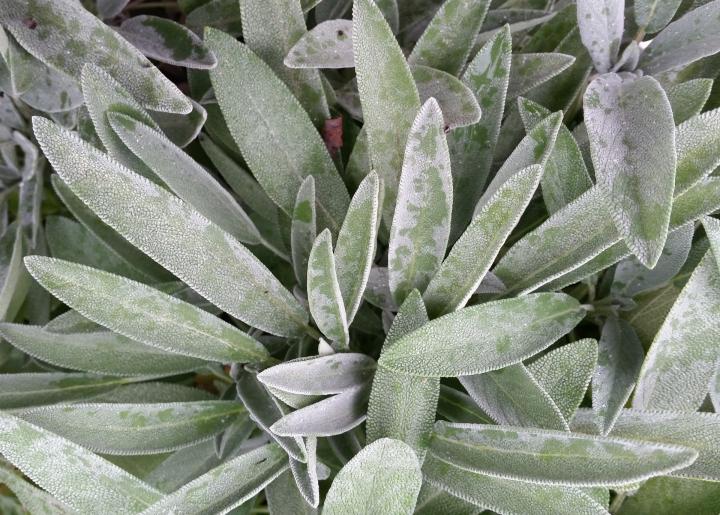
Tarragon (Artemisia dracunculus)
Flavor: Warm and spicy.
In the garden: Good companion to most vegetables, particularly eggplant.
Grows well with: Chives, lemon balm, lemon thyme, parsley, rosemary, and sage.
In the kitchen: Great with meat, eggs, poultry, seafood, and vegetables such as beans, beets, carrots, peas, and summer squashes. Also used in classic French sauces, vinegars, mustards, and dressings.
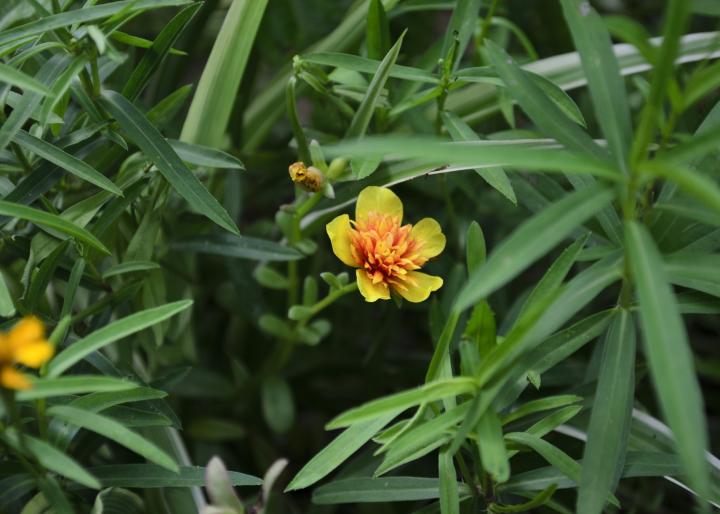
Thyme (Thymus vulgaris)
Flavor: Pungent and spicy.
In the garden: Plant near cabbage and other brassicas, as well as strawberries. Deters cabbageworm, whiteflies, and cabbage maggots.
Grows well with: Bay, basil chives, dill, lavender, lemon verbena, lovage, marjoram, oregano, parsley, rosemary, sage, and savory.
In the kitchen: Use in chicken broth or stuffing marinades for meat or fish, lamb, veal, soups, and egg dishes. Also great in tomato or wine-based sauces and works well in oils and butters.
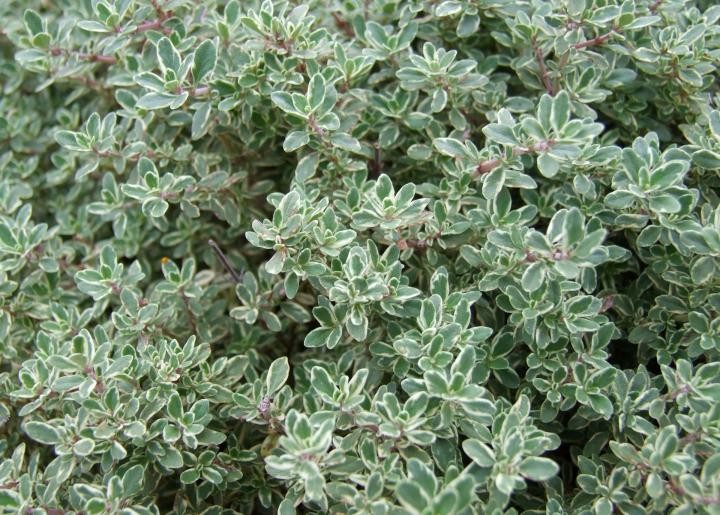
More Common Herbs & Companions
Anise
In the garden: Plant with coriander, which promotes its germination and growth.
In the kitchen: Use in cookies, cakes, fruit fillings, and bread or with cottage cheese, shellfish, and spaghetti dishes.
Borage
In the garden: Plant with tomatoes, squash, and strawberries. Deters tomato hornworm.
In the kitchen: Use leaves in salads and flowers in soups and stews.
Caraway
In the garden: Plant here and there. Loosens soil.
In the kitchen: Use in rye breads, cheese dips and rarebits, soups, applesauce, salads, coleslaw, and over pork or sauerkraut.
Chervil
In the garden: Plant with radishes.
In the kitchen: Use with soups, salads, sauces, eggs, fish, veal, lamb, and pork.
Fennel
In the garden: Plant away from other herbs and vegetables.
In the kitchen: Use to flavor pastries, confectionery, sweet pickles, sausages, tomato dishes, soups, and to flavor vinegars and oils. Gives warmth and sweetness to curries.
Garlic
In the garden: Plant near roses and raspberries. Deters Japanese beetle.
In the kitchen: Use in tomato dishes, garlic bread, soups, dips, sauces, marinades, or with meats, poultry, fish, and vegetables.
Lavender
In the garden: Edging cabbage and cauliflower patches with lavender is one way to repel harmful insects like moths. Plant near fruit trees to attract pollinators but also repel codling moths on apple trees.
Herbal buddies: Basil and oregano are popular companions.
In the kitchen: While edible, it is used sparingly in cookies. It added a delightful flavor and pop of color to scones, shortbread, and biscuits.
Lovage
In the garden: Plant here and there to improve the health and flavor of other plants.
In the kitchen: It’s a great flavoring for soups, stews, and salad dressings. Goes well with potatoes. The seeds can be used on breads and biscuits.
Summer Savory
In the garden: Plant with beans and onions to improve growth and flavor.
In the kitchen: Popular in soups, stews, stuffings, and with fish, chicken, green beans, and eggs.
Make a Culinary Herb Wreath
Make a culinary herb wreath! It works as a gorgeous decoration, or let it dry in the kitchen and snip off a sprig for cooking!
Do you use herbs as companion plants? Tell us your favorite combinations in the comments below!

:max_bytes(150000):strip_icc()/plants-that-repel-mosquitoes-4583885-hero-c3fbed5e21fd487ca4d9965ea0301980.jpg?w=768&resize=768,0&ssl=1)
:max_bytes(150000):strip_icc()/spruce-thyme-RenaLolivier-3241bfeed8264e19a60f3e80c64db4e2.jpg?w=768&resize=768,0&ssl=1)

:max_bytes(150000):strip_icc()/GettyImages-1469902775-f879f55a12ad4fc19db3e90790ac236d.jpg?w=768&resize=768,0&ssl=1)